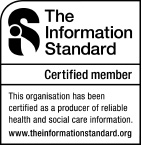What is Health Information Week?
Health Information Week #HIW2019 is a national, multi-sector campaign to promote high quality information for patients and the public. High quality health information can have a huge impact on people’s ability to stay healthy and manage illnesses effectively, giving them a better quality of life.
Themes of the Week include healthy lifestyles, patient stories, mindfulness and long-term conditions. This week, we’ve shared on our social media relevant content to the themes, and it’s all in one place for you here
Monday 1 July: Healthy lifestyles
Our holistic workshop, the Health and Wellbeing day at Cliveden House on 22 July, is the perfect place to access good quality information about healthy lifestyles for those living with a brain tumour.
Find out more about the Cliveden Day and book tickets here.

Tuesday 2nd July: Mental health and patient stories
Our long-time supporter Barty Hill’s has shared his story about his experiences of life after a brain tumour, and overcoming the obstacles and challenges that it brings.
Not only is reading the stories of other people beneficial, because it helps you know you’re not alone, sharing your story can be too. If you’d like to share your story please email eve@brainstrust.org.uk.
Wednesday 3rd July: Health and digital literacy 
There is so much information accessible on the internet, and it can be difficult to know what sources to trust. A big indicator of reliable information is the Information Standard logo (you’ll see it on all of our resources). This means that a resource has been rigorously assessed to ensure that the information it contains is balanced, up to date and evidence based.
Key things to look out for when looking for information online include, but are not limited to: Who wrote the information; when was it last updated; is it trying to sell you something; is there evidence for any claims that are made?
Check out our Information Standard accredited resources here.
Thursday 4th July: Long term conditions; and social prescribing
For those of you in London, Jane is hosting a Mindful Drawing workshop on 17 June. to help you switch off when living with a brain tumour has left you feeling overwhelmed. Here is a great article on the importance of art and hobbies in helping patients live better with their conditions.
Sign up for the workshop here.
Saturday 6th July: Patient stories
Two years ago, Jaime Brewer decided to go to the doctors during a lunch break from work, after a few weeks of ‘feeling different’. Everything changed then for Jaime and her family as it was revealed she had a brain tumour. Jaime and her daughter Charlotte, aged 12, have shared their stories for you to read here.
Sunday 7th July: Mindfulness and relaxation

If you can get to London, join us on the 17th for a Mindful Drawing workshop. When you or someone close to you is living with a #braintumour diagnosis, it can be difficult to see beyond the overwhelm. We therefore invite you to take a break from the pressures of life and spend the day with us at this workshop.









